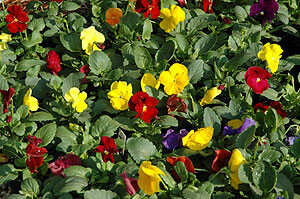
We frequently hear the terms “annuals” and “perennials” in reference to gardening, and particularly flower gardening. These terms refer to the lifespan of the plant. Annuals complete their entire lifecycle in one growing season, and then die. Perennials on the other hand, given the right conditions, will continue to survive for two or more growing seasons.
If annuals only live for a relatively short period, then why do we even bother with them? First, annuals can provide that perfect punch of color, right where you need it. They look spectacular in containers, and deliver that wow factor in any mass planting. When was the last time you saw a corporate office development that didn’t have a bed of bright, colorful annuals?
By definition, annuals are plants that germinate, grow, flower, set seed and die, all in one growing season. Think marigold or zinnia. Within this broad category or annuals, there are sub-categories that further reveal a bit more about the plant. These are:
Hardy Annuals- This is an annual that will reseed, and withstand frost. The mother plant dies, but the seeds overwinter, and germinate the next year. Cleome is an example of a hardy annual.
Half-hardy Annuals– These are plants that will withstand light frost. Seeds can be sewn in late summer, and these plants will grow, bloom, and survive some winter weather, to continue blooming as the weather warms again, in late winter, and early spring. The classic example of this plant is the pansy.
Tender Annual– These are most of the annuals we find at garden centers, and see in mass plantings in the office parks and subdivisions. These plants are easily killed by even light frost, and only thrive in the warmer weather of spring, summer, and early fall. Again, think marigolds, zinnias, coleus, and impatiens. There are many more.